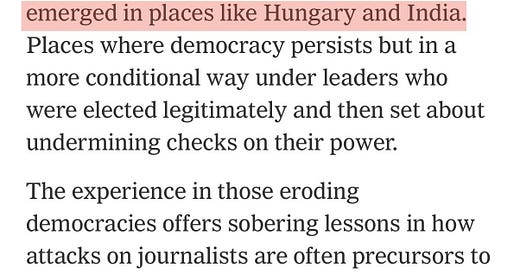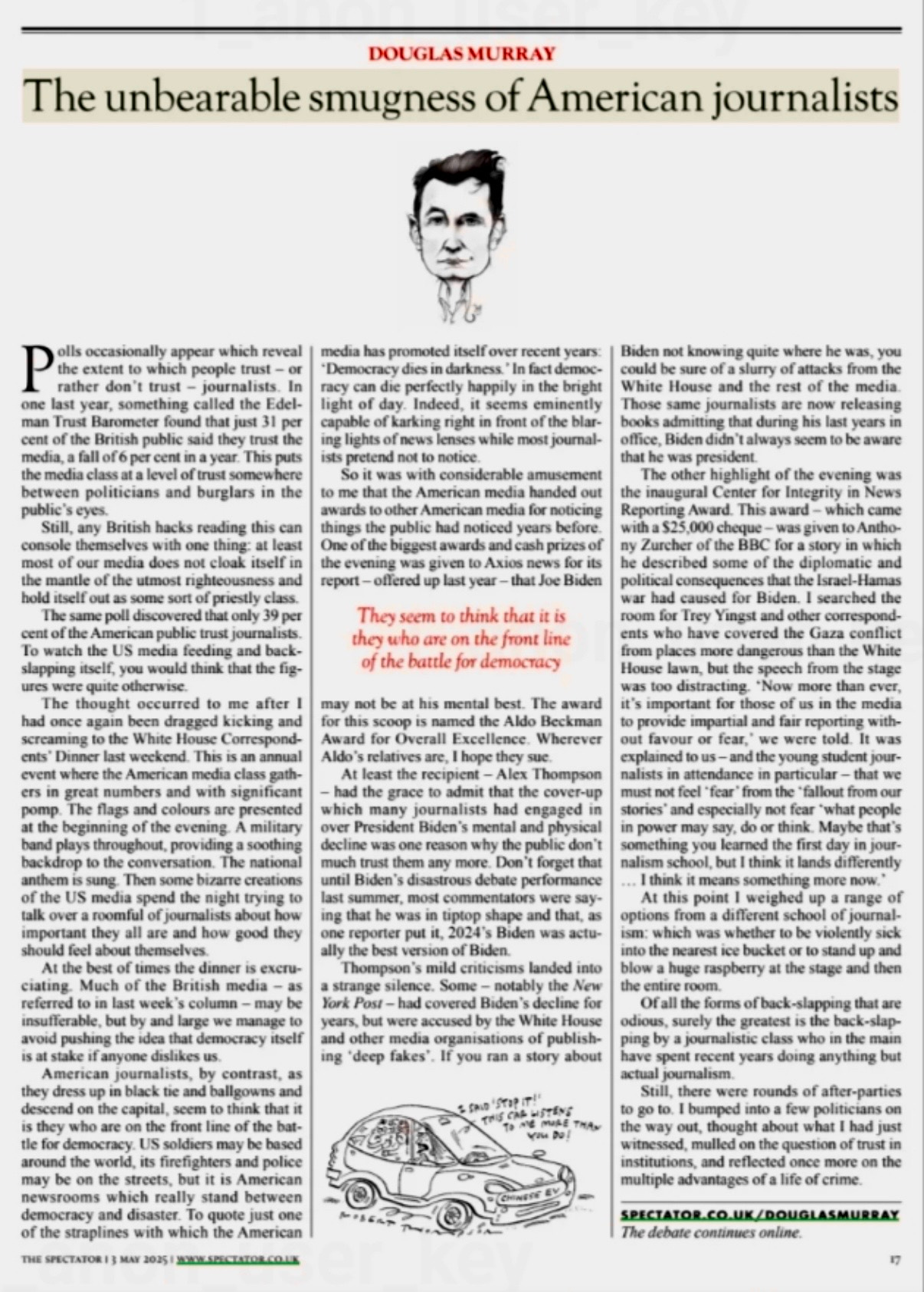New York Times's owner lists 5 ways in which countries strangle journalists. India ticks all 5 boxes (and he names India)
‘Dash’ Sulzberger on how attacking independent media is a precursor to destroying a democracy from the inside with impunity
**
Not for the first time, Arthur Gregg Sulzberger also known as Dash, the fifth generation dynast who is now the publisher of The New York Times, has spoken on the need for a free press.
(Duh.)
He did so in September last year, before the ogre called Donald Trump arrived on the scene. And he did so yesterday, well after the ogre had landed and run riot, in a speech yesterday.
A.G. Sulzberger says democracy is in retreat across the world, and attacking the free press is one of the first actions of strongmen through harassment, intimidation, surveillance and censorship:
“It’s no secret why. Once you’ve constrained the ability of journalists to provide independent information to the public about those in power, it becomes far easier to act with impunity.”
Dash bhai says such efforts are obvious in authoritarian countries like China and Russia, but adds helpfully that a more insidious playbook in countries like Hungary and India that is Bharat:
“Places where democracy persists but in a more conditional way under leaders who were elected legitimately and then set about undermining checks on their power.”
**
Dash Sulzberger lists the five tools and tactics in the anti-press playbook to tame a watchdog to become a lapdog. And patriotic Indians should be proud that the “land of Buddha and Gandhi” is an outperformer under Narendra Modi.
1) Sowing distrust in and encouraging the harassment of independent journalists and news organisations. (Purpose: to demoralise and exhaust them.)
2) Exploiting the civil courts to punish independent reporters and news outlets. (Purposes: to redirect time and money away from journalism, and to deter organisations from pursuing accountability reporting.)
3) Abusing the legal and regulatory authority to punish parts of the press that exercise independence. (Purpose: to go after the press without appearing to.)
4) Amplifying the attacks on the press by encouraging wealthy or powerful allies to join in. (Purpose: to help businesspeople ingratiate themselves with the ruling regime.)
5) Replacing independent media with government-friendly media controlled by supporters. (Purpose: to get easy questions, to attack the leader's critics, and faithfully repeat the ruling party's talking points.)
**
All fair and blazingly obvious points.
What’s three to disagree, except to offer this counter view of the unbearable sanctimony of American journalists as seen by a British journalist in ‘The Spectator’.





Very detailed insights for Tool 2, in the NLU, Delhi which launched its report, “Pressing Charges: A Study of Criminal Cases Against Journalists Across States in India”, in collaboration with the Clooney Foundation for Justice’s TrialWatch Initiative and Columbia Law School’s Human Rights Institute.
https://pressing-charges.com